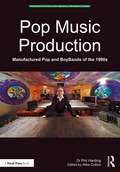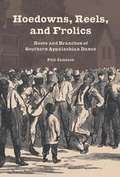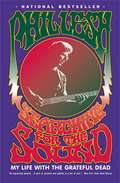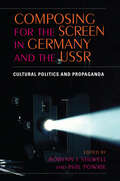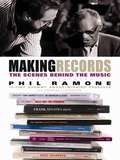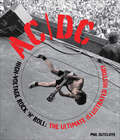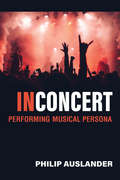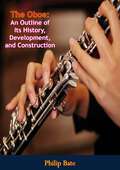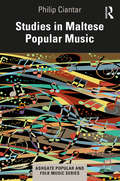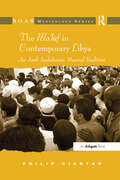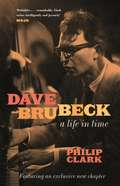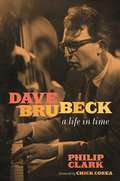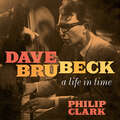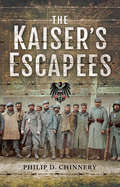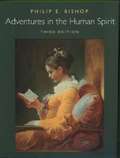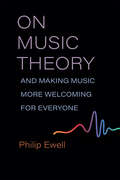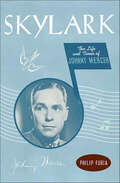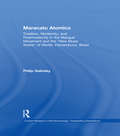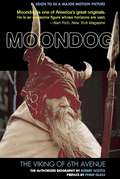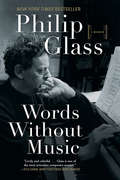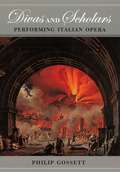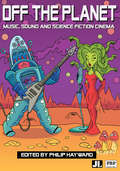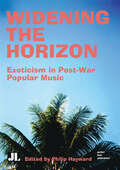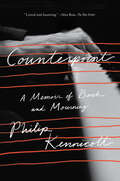- Table View
- List View
Pop Music Production: Manufactured Pop and BoyBands of the 1990s (ISSN)
by Phil HardingPop Music Production delves into academic depths around the culture, the business, the songwriting, and most importantly, the pop music production process. Phil Harding balances autobiographical discussion of events and relationships with academic analysis to offer poignant points on the value of pure popular music, particularly in relation to BoyBands and how creative pop production and songwriting teams function.Included here are practical resources, such as recording studio equipment lists, producer business deal examples and a 12-step mixing technique, where Harding expands upon previously released material to explain how ‘Stay Another Day’ by East 17 changed his approach to mixing forever. However, it is important to note that Harding almost downplays his involvement in his career. At no point is he center stage; he humbly discusses his position within the greater scheme of events. Pop Music Production offers cutting-edge analysis of a genre rarely afforded academic attention.This book is aimed at lecturers and students in the subject fields of Music Production, Audio Engineering, Music Technology, Popular Songwriting Studies and Popular Music Culture. It is suitable for all levels of study from FE students through to PhD researchers. Pop Music Production is also designed as a follow-up to Harding’s first book PWL from the Factory Floor (2010, Cherry Red Books), a memoir of his time working with 1980s pop production and songwriting powerhouse, Stock Aitken Waterman, at PWL Studios.
Hoedowns, Reels, and Frolics: Roots and Branches of Southern Appalachian Dance
by Phil JamisonIn Hoedowns, Reels, and Frolics, old-time musician and flatfoot dancer Philip Jamison journeys into the past and surveys the present to tell the story behind the square dances, step dances, reels, and other forms of dance practiced in southern Appalachia. These distinctive folk dances, Jamison argues, are not the unaltered jigs and reels brought by early British settlers, but hybrids that developed over time by adopting and incorporating elements from other popular forms. He traces the forms from their European, African American, and Native American roots to the modern day. On the way he explores the powerful influence of black culture, showing how practices such as calling dances as well as specific kinds of steps combined with white European forms to create distinctly "American" dances. From cakewalks to clogging, and from the Shoo-fly Swing to the Virginia Reel, Hoedowns, Reels, and Frolics reinterprets an essential aspect of Appalachian culture.
Searching for the Sound: My Life with the Grateful Dead
by Phil Lesh"The bass player for the greatest improvisational band in American history tells the full, true story of his life, Jerry Garcia, and the Grateful Dead." "Phil Lesh first met Jerry Garcia in 1959 in the clubs of Palo Alto, California. At Garcia's suggestion, Lesh learned how to play the electric bass and joined him in a new group that blended R & B, country, and rock 'n' roll with an experimental fervor never before heard." "Now, in time for the Grateful Dead's fortieth anniversary, Phil Lesh offers the first behind-the-scenes history of the Dead - a story no one will ever know as he does. Lesh chronicles how the Dead's signature sound emerged, flowed, and swelled to reach millions of devoted fans, from their earliest gigs at Frenchy's Bikini-A-Go-Go for an audience of three, to the legendary Acid Tests, to packed stadiums around the world."--BOOK JACKET.
Composing for the Screen in Germany and the USSR: Cultural Politics and Propaganda
by Phil Powrie Robynn J. StilwellDespite the long history of music in film, its serious academic study is still a relatively recent development and therefore comprises a limited body of work. The contributors to this book, drawn from both film studies and musicology, attempt to rectify this oversight by investigating film music from the vibrant, productive, politically charged period before World War II. They apply a variety of methodologies--including archival work, close readings, political histories, and style comparison--to this under explored field.
Making Records: The Scenes Behind the Music
by Phil RamoneSinatra. Streisand. Dylan. Pavarotti. McCartney. Sting. Madonna. What do these musicians have in common besides their super-stardom? They have all worked with legendary music producer Phil Ramone.For almost five decades, Phil Ramone has been a force in the music industry. He has produced records and collaborated with almost every major talent in the business. There is a craft to making records, and Phil has spent his life mastering it. For the first time ever, he shares the secrets of his trade.Making Records is a fascinating look "behind the glass" of a recording studio. From Phil's exhilarating early days recording jazz and commercial jingles at A&R, to his first studio, and eventual legendary producer status, Phil allows you to sit in on the sessions that created some of the most memorable music of the 20th century--including Frank Sinatra's Duets album, Bob Dylan's Blood on the Tracks, Ray Charles's Genius Loves Company and Paul Simon's Still Crazy After All These Years.In addition to being a ringside seat for contemporary popular music history, Making Records is an unprecedented tutorial on the magic behind what music producers and engineers do. In these pages, Phil offers a rare peek inside the way music is made . . . illuminating the creative thought processes behind some of the most influential sessions in music history.This is a book about the art that is making records--the way it began, the way it is now, and everything in between.
AC/DC: High-Voltage Rock 'n' Roll: The Ultimate Illustrated History
by Phil SutcliffeFormed in 1973 by brothers Angus and Malcolm Young, AC/DC has become one of the most popular rock ’n’ roll bands in history. This massive new title follows the band from its roots in Sydney, Australia, to its most recent releases and sold-out world tours. No stone is left unturned, from the AC/DC’s formation and early club gigs to its astounding worldwide success. A special cover incorporating Angus on a spinning disc gives way to more than 400 illustrations include handbills, posters, backstage passes, and vinyl from around the globe, as well as rare candid and performance photography. Sidebars from top rock scribes examine all studio releases and delve into the guitar gear of the Young brothers. The result is an awesome tribute to the band renowned for a live-wire stage show and a sonic attack that have attracted fans from all rock camps Contributors include: Phil Sutcliffe Joe Bonomo Danie Bukszpan Jen Jewel Brown Anthony Bozza Garth Cartwright Ian Christe David Dunlap Andrew Earles Dave Hunter James McNair Martin Popoff Sylvie Simmons Bill Voccia
In Concert: Performing Musical Persona
by Philip AuslanderThe conventional way of understanding what musicians do as performers is to treat them as producers of sound; some even argue that it is unnecessary to see musicians in performance as long as one can hear them. But musical performance, counters Philip Auslander, is also a social interaction between musicians and their audiences, appealing as much to the eye as to the ear. In Concert: Performing Musical Persona he addresses not only the visual means by which musicians engage their audiences through costume and physical gesture, but also spectacular aspects of performance such as light shows. Although musicians do not usually enact fictional characters on stage, they nevertheless present themselves to audiences in ways specific to the performance situation. Auslander’s term to denote the musician’s presence before the audience is musical persona. While presence of a musical persona may be most obvious within rock and pop music, the book’s analysis extends to classical music, jazz, blues, country, electronic music, laptop performance, and music made with experimental digital interfaces. The eclectic group of performers discussed include the Beatles, Miles Davis, Keith Urban, Lady Gaga, Nicki Minaj, Frank Zappa, B. B. King, Jefferson Airplane, Virgil Fox, Keith Jarrett, Glenn Gould, and Laurie Anderson.
The Oboe: An Outline of Its History, Development, and Construction
by Philip BateMr. Bates covers the known history of the oboe since its emergence in the late seventeenth century and its development from the shawm. He also makes comparisons with previously known double-reed instruments and varying types of oboes. The accoustical properties of the oboe are discussed, from the viewpoint of classical acoustics…There are chapters on traditional and modern methods of manufacture and materials; biographies of famous players; and an extended bibliography.
Studies in Maltese Popular Music (Ashgate Popular and Folk Music Series)
by Philip CiantarThis book examines the diverse facets of popular music in Malta, paying special attention to għana (Malta’s folk song), the wind band tradition, and modern popular music. Ciantar provides intriguing discussions and examples of how popular music on this small Mediterranean island country interacts with other aspects of the island’s life and culture such as language, religion, history, customs, and politics. Through a series of ethnographic vignettes, the book explores the music as it takes place in bars, at festivals, and during village celebrations, and considers how it is talked about in the local press, at group gatherings, and on social media. The ethnography adopted here is that of a native musician and ethnomusicologist and therefore marries the author’s memories with ongoing observations and their evaluation.
The Ma'luf in Contemporary Libya: An Arab Andalusian Musical Tradition (SOAS Studies in Music Series)
by Philip CiantarThe musical tradition of Ma'luf is believed to have come to North Africa with Muslim and Jewish refugees escaping the Christian reconquista of Spain between the tenth and seventeenth centuries. Although this Arab Andalusian music tradition has been studied in other parts of the region, until now, the Libyan version has not received Western scholarly attention. This book investigates the place of this orally-transmitted music tradition in contemporary Libyan life and culture. It investigates the people that make it and the institutions that nurture it as much as the tradition itself. Patronage, music making, discourse both about life and music, history, and ideology all unite in a music tradition which looks innocent from the outside but appears quite intriguing and intricate the more one explores it.
Dave Brubeck: A Life In Time
by Philip ClarkWINNER OF THE PRESTO JAZZ BOOK OF THE YEAR 2020An articulate, scrupulously researched account based on first-hand information, this book presents Brubeck's contribution to music with the critical insight that it deserves - ***** BBC Music Magazine This is the writing about jazz that we've been waiting for - Mike WestbrookThe sheer descriptive verve, page after page, made me want to listen to every single musical example cited. A major achievement - Stephen Hough'Definitive . . . remarkable. Clark writes intelligently and joyously.' - MojoIn 2003, music journalist Philip Clark was granted unparalleled access to jazz legend Dave Brubeck. Over the course of ten days, he shadowed the Dave Brubeck Quartet during their extended British tour, recording an epic interview with the bandleader. Brubeck opened up as never before, disclosing his unique approach to jazz; the heady days of his 'classic' quartet in the 1950s-60s; hanging out with Duke Ellington, Charlie Parker, Louis Armstrong, and Miles Davis; and the many controversies that had dogged his 66-year-long career.Alongside beloved figures like Ella Fitzgerald and Frank Sinatra, Brubeck's music has achieved name recognition beyond jazz. But finding a convincing fit for Brubeck's legacy, one that reconciles his mass popularity with his advanced musical technique, has proved largely elusive. In Dave Brubeck: A Life in Time, Clark provides us with a thoughtful, thorough, and long-overdue biography of an extraordinary man whose influence continues to inform and inspire musicians today.Structured around Clark's extended interview and intensive new research, this book tells one of the last untold stories of jazz, unearthing the secret history of 'Take Five' and many hitherto unknown aspects of Brubeck's early career - and about his creative relationship with his star saxophonist Paul Desmond. Woven throughout are cameo appearances from a host of unlikely figures from Sting, Ray Manzarek of The Doors, and Keith Emerson, to John Cage, Leonard Bernstein, Harry Partch, and Edgard Varèse. Each chapter explores a different theme or aspect of Brubeck's life and music, illuminating the core of his artistry and genius.
Dave Brubeck: A Life in Time
by Philip ClarkThe definitive, investigative biography of jazz legend Dave Brubeck ("Take Five")In 2003, music journalist Philip Clark was granted unparalleled access to jazz legend Dave Brubeck. Over the course of ten days, he shadowed the Dave Brubeck Quartet during their extended British tour, recording an epic interview with the bandleader. Brubeck opened up as never before, disclosing his unique approach to jazz; the heady days of his "classic" quartet in the 1950s-60s; hanging out with Duke Ellington, Charlie Parker, Louis Armstrong, and Miles Davis; and the many controversies that had dogged his 66-year-long career. Alongside beloved figures like Ella Fitzgerald and Frank Sinatra, Brubeck's music has achieved name recognition beyond jazz. But finding a convincing fit for Brubeck's legacy, one that reconciles his mass popularity with his advanced musical technique, has proved largely elusive. In Dave Brubeck: A Life in Time, Clark provides us with a thoughtful, thorough, and long-overdue biography of an extraordinary man whose influence continues to inform and inspire musicians today. Structured around Clark's extended interview and intensive new research, this book tells one of the last untold stories of jazz, unearthing the secret history of "Take Five" and many hitherto unknown aspects of Brubeck's early career - and about his creative relationship with his star saxophonist Paul Desmond. Woven throughout are cameo appearances from a host of unlikely figures from Sting, Ray Manzarek of The Doors, and Keith Emerson, to John Cage, Leonard Bernstein, Harry Partch, and Edgard Varèse. Each chapter explores a different theme or aspect of Brubeck's life and music, illuminating the core of his artistry and genius. To quote President Obama, as he awarded the musician with a Kennedy Center Honor: "You can't understand America without understanding jazz, and you can't understand jazz without understanding Dave Brubeck."
Dave Brubeck: A Life in Time
by Philip ClarkThe definitive, investigative biography of jazz legend Dave Brubeck.In 2003, music journalist Philip Clark was granted unparalleled access to jazz legend Dave Brubeck. Over the course of ten days, he shadowed the Dave Brubeck Quartet during their extended British tour, recording an epic interview with the bandleader. Brubeck opened up as never before, disclosing his unique approach to jazz; the heady days of his 'classic' quartet in the 1950s-60s; hanging out with Duke Ellington, Charlie Parker, Louis Armstrong, and Miles Davis; and the many controversies that had dogged his 66-year-long career.Alongside beloved figures like Ella Fitzgerald and Frank Sinatra, Brubeck's music has achieved name recognition beyond jazz. But finding a convincing fit for Brubeck's legacy, one that reconciles his mass popularity with his advanced musical technique, has proved largely elusive. In Dave Brubeck: A Life in Time, Clark provides us with a thoughtful, thorough, and long-overdue biography of an extraordinary man whose influence continues to inform and inspire musicians today.Structured around Clark's extended interview and intensive new research, this book tells one of the last untold stories of jazz, unearthing the secret history of 'Take Five' and many hitherto unknown aspects of Brubeck's early career - and about his creative relationship with his star saxophonist Paul Desmond. Woven throughout are cameo appearances from a host of unlikely figures from Sting, Ray Manzarek of The Doors, and Keith Emerson, to John Cage, Leonard Bernstein, Harry Partch, and Edgard Varèse. Each chapter explores a different theme or aspect of Brubeck's life and music, illuminating the core of his artistry and genius.(P) 2020 Hachette Audio
The Kaiser's Escapees: Allied POW escape attempts during the First World War
by Philip D. ChinneryFollowing on from the his first well-received book 'The Kaisers First POWs' Philip Chinnery now turns his attention to the attempts by allied prisoners of war to escape the Kaiser's clutches and return to their homeland. As the war progressed, the treatment of allied prisoners worsened as the blockade of Germany reduced the amount of food and material coming into the country. The majority of the prisoners were too weak or ill-equipped to attempt to escape, but there were others who were determined to pit their wits against their jailers. These included the officers at Holzminden prison, who dug a tunnel allowing twenty-eight of their number to escape; men like Canadian Private Simmons, who escaped and was recaptured twice before his third attempt saw him gain his freedom; men who jumped from moving trains or marched brazenly out of the camp gates disguised as German officers.Although Holland and Switzerland were neutral countries during the First World War, escaping from their camps, crossing miles of enemy territory and outwitting the sentries guarding the frontiers taxed even the strongest individuals. But many men did make the attempt and more than a few of them were successful. This is their story.
Adventures In The Human Spirit (Third Edition)
by Philip E. BishopExceptionally student-friendly, extensively illustrated, and engagingly thought-provoking, this one-volume historical survey of the humanities is accessible--and inviting--to readers with little background in the arts and humanities. Carefully balanced among the major arts, philosophy, and religion and finely focused on selected principal events, styles, movements, and figures, it brings the past to life by including authentic documents from daily life, comparative global perspectives, and examples from literature, philosophy, music--including the contributions of women and minority artists. For individuals waiting to discover the humanities' rich connections to their own
On Music Theory, and Making Music More Welcoming for Everyone (Music and Social Justice)
by Philip EwellSince its inception in the mid-twentieth century, American music theory has been framed and taught almost exclusively by white men. As a result, whiteness and maleness are woven into the fabric of the field, and BIPOC music theorists face enormous hurdles due to their racial identities. In On Music Theory, Philip Ewell brings together autobiography, music theory and history, and theory and history of race in the United States to offer a black perspective on the state of music theory and to confront the field’s white supremacist roots. Over the course of the book, Ewell undertakes a textbook analysis to unpack the mythologies of whiteness and western-ness with respect to music theory, and gives, for the first time, his perspective on the controversy surrounding the publication of volume 12 of the Journal of Schenkerian Studies. He speaks directly about the antiblackness of music theory and the antisemitism of classical music writ large and concludes by offering suggestions about how we move forward. Taking an explicitly antiracist approach to music theory, with this book Ewell begins to create a space in which those who have been marginalized in music theory can thrive.
Skylark: The Life and Times of Johnny Mercer
by Philip FuriaSkylark is the story of the tormented but glorious life and career of Johnny Mercer, and the first biography of this enormously popular and influential lyricist. Raised in Savannah, Mercer brought a quintessentially southern style to both his life in New York and to his lyrics, which often evoked the landscapes and mood of his youth ("Moon River", "In the Cool, Cool, Cool of the Evening"). Mercer also absorbed the music of southern blacks--the lullabies his nurse sang to him as a baby and the spirituals that poured out of Savannah's churches-and that cool smooth lyrical style informed some of his greatest songs, such as "That Old Black Magic".Part of a golden guild whose members included Cole Porter and Irving Berlin, Mercer took Hollywood by storm in the midst of the Great Depression. Putting words to some of the most famous tunes of the time, he wrote one hit after another, from "You Must Have Been a Beautiful Baby" to "Jeepers Creepers" and "Hooray for Hollywood." But it was also in Hollywood that Mercer's dark underside emerged. Sober, he was a kind, generous and at times even noble southern gentleman; when he drank, Mercer tore into friends and strangers alike with vicious abuse. Mercer's wife Ginger, whom he'd bested Bing Crosby to win, suffered the cruelest attacks; Mercer would even improvise cutting lyrics about her at parties.During World War II, Mercer served as Americas's troubadour, turning out such uplifting songs as "My Shining Hour" and "Ac-cent-tchu-ate the Positive." He also helped create Capitol Records, the first major West Coast recording company, where he discovered many talented singers, including Peggy Lee and Nat King Cole. During this period, he also began an intense affair with Judy Garland, which rekindled time and again for the rest of their lives. Although they never found happiness together, Garland became Mercer's muse and inspired some of his most sensuous and heartbreaking lyrics: "Blues in the Night," "One for My Baby," and "Come Rain or Come Shine."Mercer amassed a catalog of over a thousand songs and during some years had a song in the Top Ten every week of the year--the songwriting equivalent of Joe DiMaggio's hitting streak--but was plagued by a sense of failure and bitterness over the big Broadway hit that seemed forever out of reach.Based on scores of interviews with friends, family and colleagues, and drawing extensively on Johnny Mercer's letters, papers and his unpublished autobiography, Skylark is an important book about one of the great and dramatic characters in 20th century popular music.
Maracatu Atomico: Tradition, Modernity, and Postmodernity in the Mangue Movement of Recife, Brazil (Current Research in Ethnomusicology: Outstanding Dissertations #Vol. 3)
by Philip Galinsky"Maracatu Atômico" is the first academic work to investigate the mangue movement, one of Brazil's most vital pop culture trends of the last thirty years, and the related "new music scene" of Northeast Brazil. Contending with the widespread poverty and social problems, mangue places a renewed value on the local environment and its myriad folk traditions while embracing modern, global pop influences and technology. The book provides historical and ethnographic accounts of the movement, analyzes salient examples of folk and pop fusion music, and enters recent debates about postmodernity, globalization, and "world music" in an attempt to understand better how local musicians in one "Third World" region interact within a more global cultural system.
Moondog
by Philip Glass Robert Scotto<P>The basis of a full-length documentary."Moondog is one of America's great originals."-Alan Rich, New York Magazine <P>Here is a revised edition of a book that celebrates one of the most improbable lives of the twentieth century: a blind and homeless man who became the most famous eccentric in New York and who, with enormous diligence, rose to prominence both in major label pop music recordings in addition to symphonic concerts of his compositions. <P>This edition of Moondog will soon be seen a as a feature documentary titled The Viking of 6th Avenue directed by Holly Elson and produced by Hard Working Movies.Born Louis Thomas Hardin in 1916, Moondog first made an impression in the late 1940s when he became a mascot of The New York Philharmonic at Carnegie Hall. His unique, melodic compositions were released on the Prestige jazz label. In the late 1960s the Viking-garbed Moondog was a pop music sensation on Columbia Records. <P>Moondog's compositional style influenced his former roommate Philip Glass, whose preface appears in the book. Moondog's work transcends labels and redefines the distinction between popular and high culture. <P>A wide-ranging compilation of Moondog recordings, which includes four Madrigals played by Philip Glass, Steven Reich, Jon Gibson, and Moondog himself, are offered as free downloads for every purchaser of this biography.
Words Without Music: A Memoir
by Philip GlassThe long-awaited memoir by "the most prolific and popular of all contemporary composers" (New York Times). A world-renowned composer of symphonies, operas, and film scores, Philip Glass has, almost single-handedly, crafted the dominant sound of late-twentieth-century classical music. Yet here in Words Without Music, he creates an entirely new and unexpected voice, that of a born storyteller and an acutely insightful chronicler, whose behind-the-scenes recollections allow readers to experience those moments of creative fusion when life so magically merged with art. "If you go to New York City to study music, you'll end up like your uncle Henry," Glass's mother warned her incautious and curious nineteen-year-old son. It was the early summer of 1956, and Ida Glass was concerned that her precocious Philip, already a graduate of the University of Chicago, would end up an itinerant musician, playing in vaudeville houses and dance halls all over the country, just like his cigar-smoking, bantamweight uncle. One could hardly blame Mrs. Glass for worrying that her teenage son would end up as a musical vagabond after initially failing to get into Juilliard. Yet, the transformation of a young man from budding musical prodigy to world-renowned composer is the story of this commanding memoir. From his childhood in post-World War II Baltimore to his student days in Chicago, at Juilliard, and his first journey to Paris, where he studied under the formidable Nadia Boulanger, Glass movingly recalls his early mentors, while reconstructing the places that helped shape his artistic consciousness. From a life-changing trip to India, where he met with gurus and first learned of Gandhi's Salt March, to the gritty streets of New York in the 1970s, where the composer returned, working day jobs as a furniture mover, cabbie, and an unlicensed plumber, Glass leads the life of a Parisian bohemian artist, only now transported to late-twentieth-century America. Yet even after Glass's talent was first widely recognized with the sensational premiere of Einstein on the Beach in 1976, even after he stopped renewing his hack license and gained international recognition for operatic works like Satyagraha, Orphée, and Akhnaten, the son of a Baltimore record store owner never abandoned his earliest universal ideals throughout his memorable collaborations with Allen Ginsberg, Ravi Shankar, Robert Wilson, Doris Lessing, Martin Scorsese, and many others, all of the highest artistic order. Few major composers are celebrated as writers, but Philip Glass, in this loving and slyly humorous autobiography, breaks across genres and re-creates, here in words, the thrill that results from artistic creation. Words Without Music ultimately affirms the power of music to change the world.
Divas and Scholars: Performing Italian Opera
by Philip GossettWinner of the 2007 Otto Kinkeldey Award from the American Musicological Society and the 2007 Deems Taylor Award from the American Society of Composers, Authors, and Publishers.Divas and Scholars is a dazzling and beguiling account of how opera comes to the stage, filled with Philip Gossett’s personal experiences of triumphant—and even failed—performances and suffused with his towering and tonic passion for music. Writing as a fan, a musician, and a scholar, Gossett, the world's leading authority on the performance of Italian opera, brings colorfully to life the problems, and occasionally the scandals, that attend the production of some of our most favorite operas. Gossett begins by tracing the social history of nineteenth-century Italian theaters in order to explain the nature of the musical scores from which performers have long worked. He then illuminates the often hidden but crucial negotiations opera scholars and opera conductors and performers: What does it mean to talk about performing from a critical edition? How does one determine what music to perform when multiple versions of an opera exist? What are the implications of omitting passages from an opera in a performance? In addition to vexing questions such as these, Gossett also tackles issues of ornamentation and transposition in vocal style, the matters of translation and adaptation, and even aspects of stage direction and set design. Throughout this extensive and passionate work, Gossett enlivens his history with reports from his own experiences with major opera companies at venues ranging from the Metropolitan and Santa Fe operas to the Rossini Opera Festival at Pesaro. The result is a book that will enthrall both aficionados of Italian opera and newcomers seeking a reliable introduction to it—in all its incomparable grandeur and timeless allure.
They All Sang On The Corner: A Second Look At New York City's Rhythm And Blues Vocal Groups
by Philip GroiaThis book contains over 700 references to groups and individuals who made Rhythm and Blues become big-time.
Off the Planet: Music, Sound and Science Fiction Cinema (Encounters)
by Philip HaywardOver the last decade, music and sound have been increasingly recognized as an important—if often neglected—aspect of film production and film studies. Off the Planet comprises a lively, stimulating, and diverse collection of essays on aspects of music, sound, and Science Fiction cinema. Following a detailed historical introduction to the development of sound and music in the genre, individual chapters analyze key films, film series, composers, and directors in the postwar era. The first part of the anthology profiles seminal 1950s productions such as The Day the Earth Stood Still, the first Godzilla film, and Forbidden Planet. Later chapters analyze the work of composer John Williams, the career of director David Cronenberg, the Mad Max series, James Cameron’s Terminators, and other notable SF films such as Space Is the Place, Blade Runner, Mars Attacks!, and The Matrix. Off the Planet is an important contribution to the emerging body of work in music and film. Contributors include leading film experts from Australia, Canada, Japan, New Zealand, the United Kingdom, and the United States.Distributed for John Libbey Publishing
Widening the Horizon: Exoticism in Post-War Popular Music
by Philip HaywardA deep dive into the history and retro appeal of musical exotica, including the Orientalism, Hawaiianesque, and Afro-tropicalism sub-sets.Widening the Horizon is the first in-depth study of exoticism in Post-War popular music. The opening chapters analyze the work of Les Baxter, Martin Denny, Arthur Lyman, Korla Pandit, Yma Sumac—the musicians who developed (and exemplified) the style known as Exotica in the 1950s and 1960s. Other chapters address more recent developments in musical exoticism which have revived and reinflected the form, such as Haruomi Hosono’s Soy Sauce Music trilogy; the works of Van Dyke Parks, on albums such as Tokyo Rose; and the career of New Age populist/exoticist Yanni.Contributors to this anthology include writers and academics from Australia, Canada, Japan, the United Kingdom, and the United States.
Counterpoint: A Memoir Of Bach And Mourning
by Philip KennicottA Pulitzer Prize–winning critic reflects on the meaning and emotional impact of a Bach masterwork. As his mother was dying, Philip Kennicott began to listen to the music of Bach obsessively. It was the only music that didn’t seem trivial or irrelevant, and it enabled him to both experience her death and remove himself from it. For him, Bach’s music held the elements of both joy and despair, life and its inevitable end. He spent the next five years trying to learn one of the composer’s greatest keyboard masterpieces, the Goldberg Variations. In Counterpoint, he recounts his efforts to rise to the challenge, and to fight through his grief by coming to terms with his memories of a difficult, complicated childhood. He describes the joys of mastering some of the piano pieces, the frustrations that plague his understanding of others, the technical challenges they pose, and the surpassing beauty of the melodies, harmonies, and counterpoint that distinguish them. While exploring Bach’s compositions he sketches a cultural history of playing the piano in the twentieth century. And he raises two questions that become increasingly interrelated, not unlike a contrapuntal passage in one of the variations itself: What does it mean to know a piece of music? What does it mean to know another human being?
